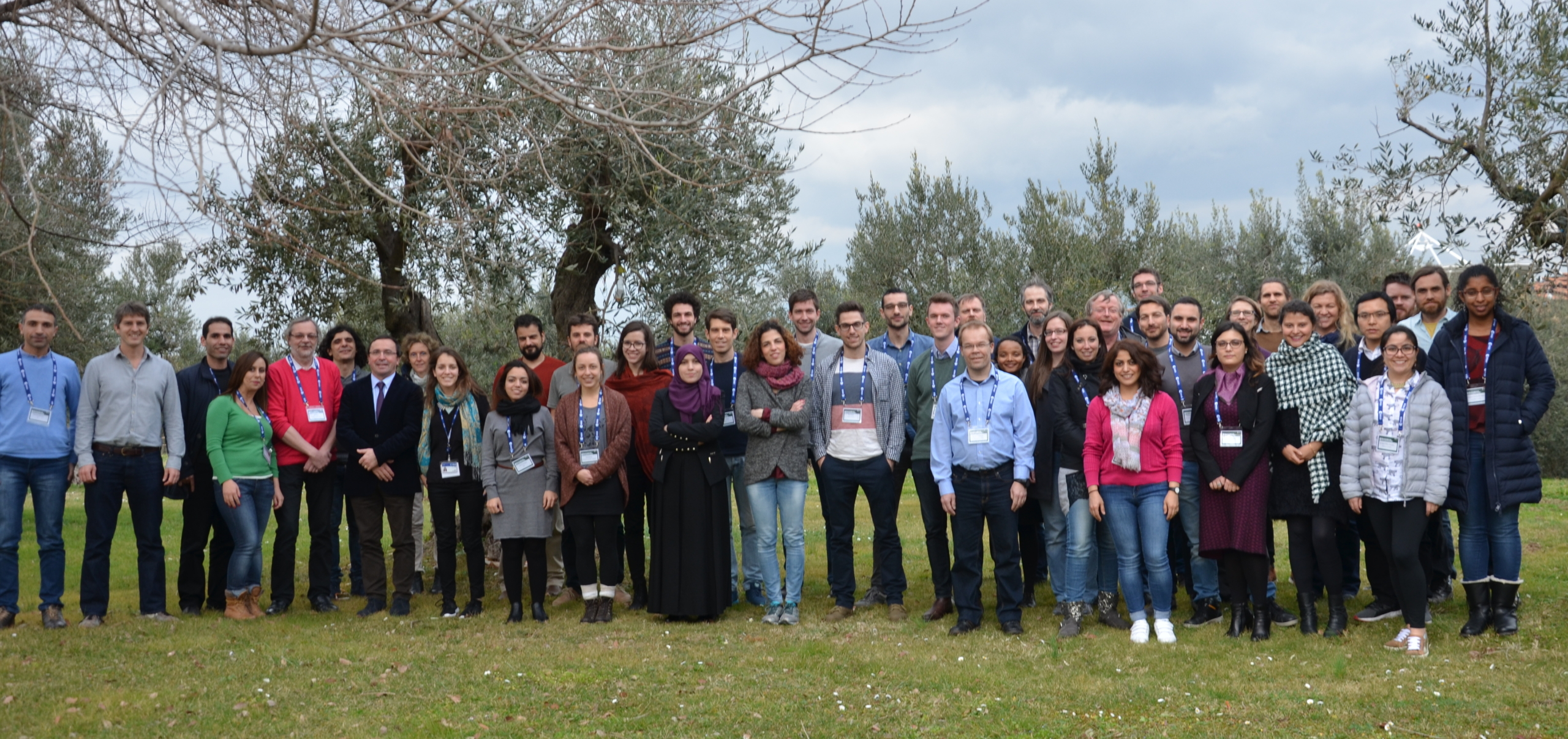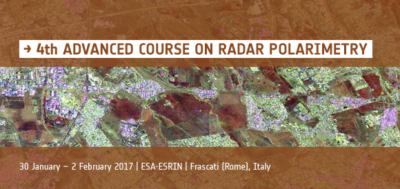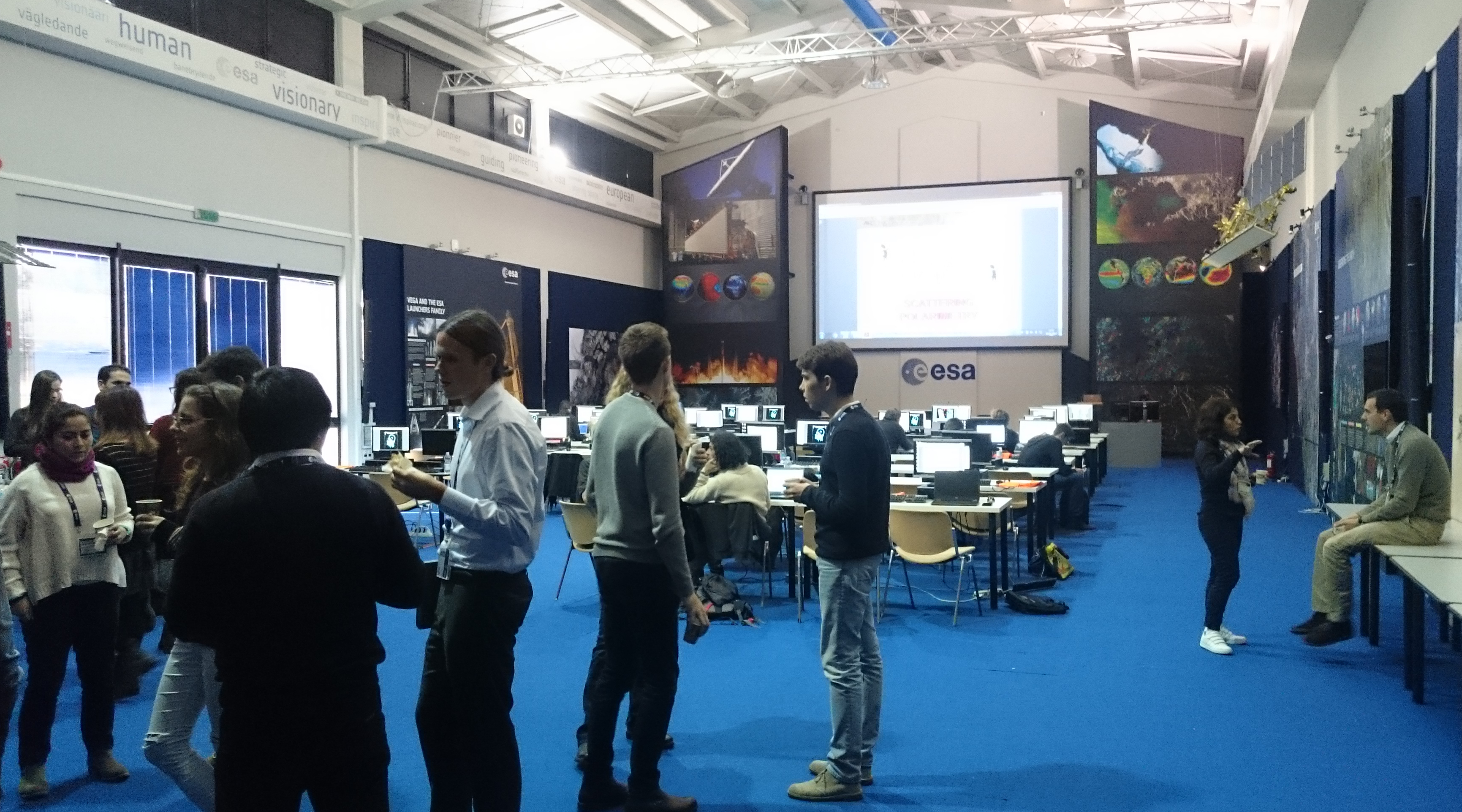Using European Space Agency expertise to grow better crops
22/02/2017

When you hear the words European Space Agency (ESA), ambitious missions to mars or spectacular crash-landings on comets may come to mind. What is less likely to occur is agriculture and improving crop yields. But earlier this month (6th-9th February 2017), I attended the 4th ESA Advanced Course on Radar Polarimetry taking place in ESA-ESRIN, Frascati (Italy) for those very reasons.
 This free course was an excellent opportunity to meet experts in the field of Polarimetric Synthetic Aperture Radar (PolSAR) and to learn more about the potentials and limitations of this technique. PoISAR is a measurement system based on Radar (an antenna on-board a satellite/plane emits an electromagnetic wave down the Earth and records the echo from the land surface) able to record signals at different polarisations…think of it as a camera recording different colours. These polarisations are sensitive to different characteristics (structure, water content, etc.) of the imaged scene.
This free course was an excellent opportunity to meet experts in the field of Polarimetric Synthetic Aperture Radar (PolSAR) and to learn more about the potentials and limitations of this technique. PoISAR is a measurement system based on Radar (an antenna on-board a satellite/plane emits an electromagnetic wave down the Earth and records the echo from the land surface) able to record signals at different polarisations…think of it as a camera recording different colours. These polarisations are sensitive to different characteristics (structure, water content, etc.) of the imaged scene.
As a research fellow in Remote Sensing within the Cranfield Soil and Agrifood Institute, I am often involved in research projects looking at detecting crop growth stages, or estimating yield. I was looking forward to learning more about PolSAR, which has many applications in Remote Sensing of vegetation, from measuring tree heights or biomass in the Amazon and the Boreal forests, to detecting objects concealed under vegetation.
Course review
Well, the course went beyond my expectations. It covered the principles of PolSAR, with a focus on advanced measurement techniques like polarimetric interferometry (Pol-InSAR) and polarimetric tomography (Pol-TomoSAR). The morning lectures were very informative, with engaging experts always happy to discuss the numerous questions of the audience (mainly PhD students and Post-Docs). The afternoon practical sessions were well thought out and very useful as teaching PolSAR often relies on a series of mathematical concepts. All this was punctuated by presentations on the latest Earth Observation missions and their scientific results. Beyond the great learning experience, the course was also a good platform for networking with other scientists in universities and in companies involved in SAR Remote Sensing.

The Colosseum, Rome
Frascati is only 30 minutes away from Rome, meaning I had time to make an express visit to the main historical sights (the Colosseum, Pantheon, Trevi Fountain, Vatican), and a typical Italian ice cream of course!
But back to work! The ESA runs various free events within the context of the Scientific Exploitation of Operational Missions program (SEOM). SEOM’s aims include stimulating research, training scientists, and promoting data use and results. In practice, this is done by regularly organising free workshops, short courses, and summer schools on various remote sensing topics covering land, ocean, atmosphere, and cryosphere. And if you miss an event, all the materials are usually made freely available on the ESA-SEOM website. I would definitely recommend this type of courses to any scientists interested in Earth Observation, from MSc students to lecturers.

The lecture room at ESA-ESRIN
Categories & Tags:
Leave a comment on this post:
You might also like…
Preparing your work for Turnitin submission
Before submitting your work into Turnitin for similarity checking, if you have used referencing software then you may need to take some important steps first. Mendeley and Zotero integrate with MS Word by embedding field ...
The fast track to supercar engineering: My Cranfield journey
It’s been a dream come true to work on some of the world’s most prestigious supercars – the Aston Martin Valhalla, McLaren 750 & Artura, the GMA T.33. But every successful ...
Automotive Engineering: From student to hypercar innovation at Rimac
We sat down with recent graduate Thomas Perrin, to discuss how his year on the MSc in Automotive Engineering at Cranfield University propelled him from the lecture hall directly into the ...
What this year at Cranfield really meant to me
Every Cranfield journey is unique. In this alumni reflection, Zachea Scicluna shares what her year at Cranfield truly meant, from facing uncertainty to gaining hands-on experience in industry-backed projects. I’ve been reflecting (and delaying) ...
Preparing for assignments and exams?
Sorry! We know it seems a bit mean to mention the exams in January rather than looking forward to the break before it! However, we know many of you will be thinking about your forthcoming ...
Screening for FTSE 100 companies on Bloomberg
So you’re researching an index and need some data on its constituent companies? Bloomberg’s Equity Screening tool makes light work of this, not just for the FTSE, but for indices, exchanges and sectors worldwide. Type EQS ...






